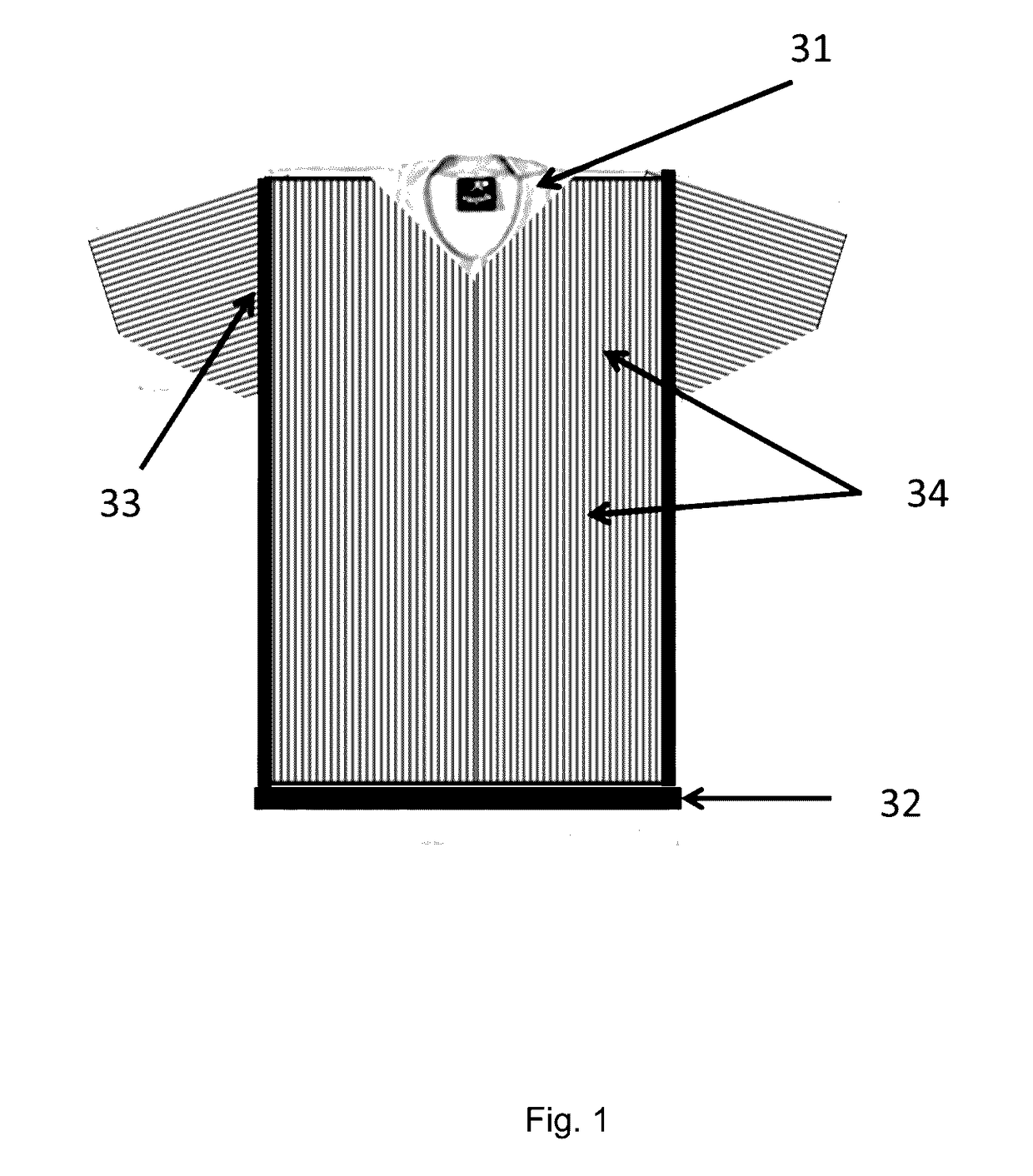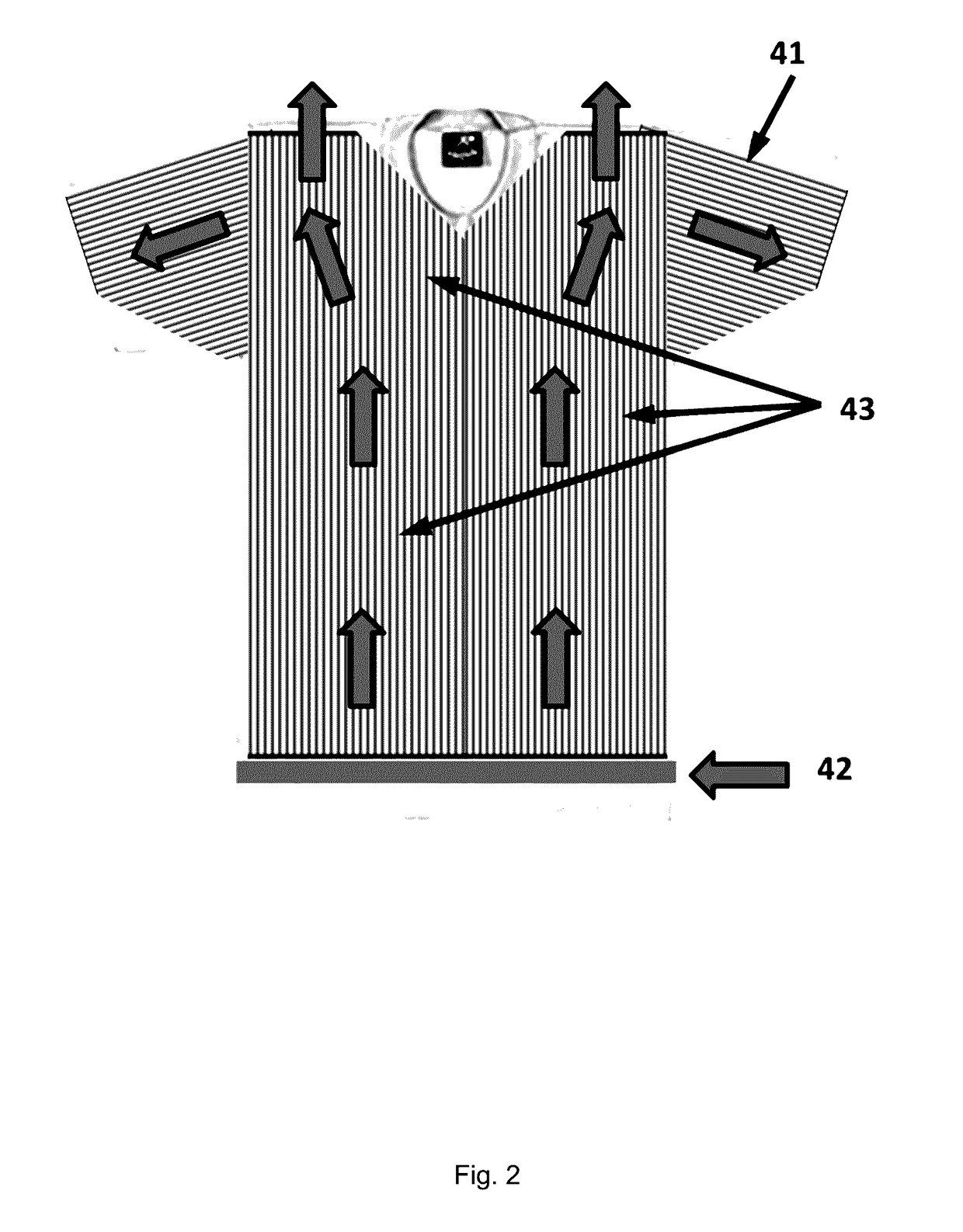Cooling garment
a technology of cooling garments and garments, applied in the field of cooling garments, can solve the problems of loss of effectiveness, heat exhaustion and heat stroke risk, significant cognitive impairment, etc., and achieve the effect of preventing both overheating and overcooling and preventing heat related illnesses
- Summary
- Abstract
- Description
- Claims
- Application Information
AI Technical Summary
Benefits of technology
Problems solved by technology
Method used
Image
Examples
example 1
le Channels
[0064]A shirt that contains about 44 channels where the channels are half circles with a 1.0-inch diameter. This garment removes about 114 Watts for a sweating wearer.
example 2
le Channels
[0065]A shirt that contains about 88 channels where the channels are half circles with a 0.5-inch diameter. This garment removes about 228 Watts for a sweating wearer.
example 3
le Channels
[0066]A shirt that contains about 88 channels where the channels are half circles with a 0.25-inch diameter. This garment theoretically removes about 455 Watts for a sweating wearer, which may exceed the theoretical maximum based on the sweating capacity of the wearer.
PUM
 Login to View More
Login to View More Abstract
Description
Claims
Application Information
 Login to View More
Login to View More - R&D
- Intellectual Property
- Life Sciences
- Materials
- Tech Scout
- Unparalleled Data Quality
- Higher Quality Content
- 60% Fewer Hallucinations
Browse by: Latest US Patents, China's latest patents, Technical Efficacy Thesaurus, Application Domain, Technology Topic, Popular Technical Reports.
© 2025 PatSnap. All rights reserved.Legal|Privacy policy|Modern Slavery Act Transparency Statement|Sitemap|About US| Contact US: help@patsnap.com



